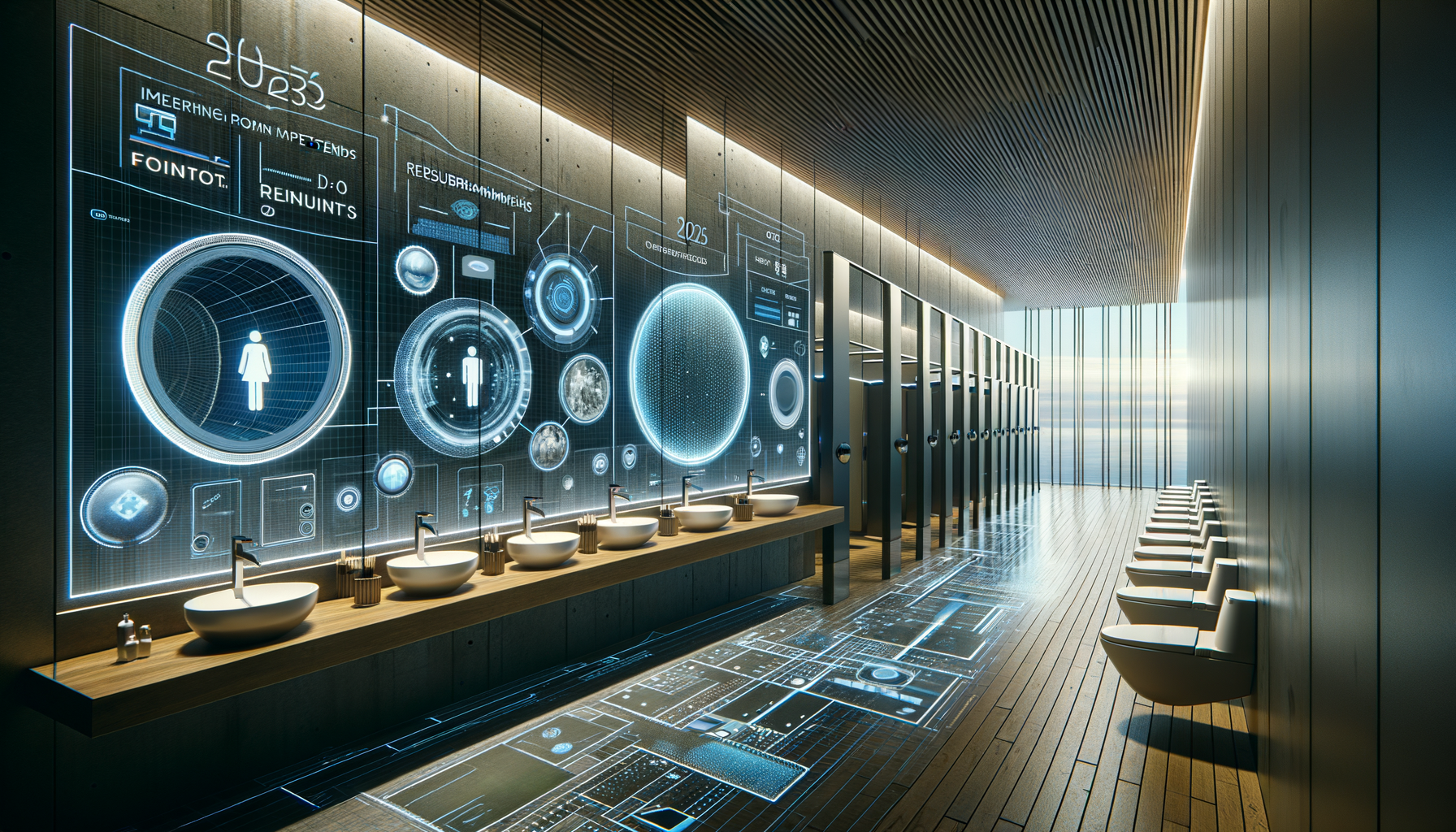Introduction to Restroom Refurbishment Trends
As we gaze into the crystal ball of future home design, the restroom emerges not just as a functional space but as a sanctuary of innovation and style. With 2025 on the horizon, restroom refurbishment is set to embrace a blend of aesthetics, sustainability, and advanced technology. This transformation is driven by a growing awareness of environmental issues, a desire for personalized spaces, and the rapid advancement of smart home technologies. This article explores the emerging trends in restroom refurbishment, offering insights into what homeowners and designers can expect as they plan their next renovation.
Sustainability Takes Center Stage
One of the most significant trends in restroom refurbishment for 2025 is the emphasis on sustainability. As environmental concerns continue to rise, homeowners are increasingly seeking eco-friendly solutions. This trend is reflected in the choice of materials, fixtures, and even the overall design approach. Sustainable materials such as reclaimed wood, recycled glass, and bamboo are becoming popular choices for cabinetry and flooring. These materials not only reduce the carbon footprint but also add a unique aesthetic appeal to the space.
In addition to materials, water conservation is a key focus. The integration of low-flow toilets and faucets, water-saving showerheads, and smart water management systems can significantly reduce water usage. These innovations not only help the environment but also lead to cost savings on utility bills. Furthermore, the use of energy-efficient lighting, such as LED fixtures, is becoming standard, contributing to the overall sustainability of the bathroom.
Overall, the trend towards sustainability is not just about being eco-friendly; it’s about creating a healthier living environment. By choosing non-toxic materials and improving air quality through better ventilation systems, homeowners can ensure that their restrooms are both sustainable and healthy spaces.
The Rise of Smart Bathrooms
The integration of smart technology into restrooms is another trend that is expected to gain momentum in 2025. Smart bathrooms are designed to enhance convenience, comfort, and efficiency through the use of advanced technology. Key features include smart mirrors that provide weather updates and news, voice-activated lighting and temperature controls, and digital showers that allow users to set precise water temperatures and flow rates.
Moreover, smart toilets with built-in bidet functions, automatic lid openers, and self-cleaning capabilities are becoming more common. These toilets often include heated seats and night lights, adding an extra layer of comfort. Smart technology also extends to water management, with systems that monitor water usage and detect leaks, helping to prevent water waste and potential damage.
The adoption of smart technology in bathrooms is not just a luxury; it represents a shift towards more efficient and personalized living spaces. As technology continues to evolve, we can expect even more innovative solutions that cater to the specific needs and preferences of homeowners.
Embracing Minimalist Design
Minimalism is a design philosophy that continues to influence restroom refurbishment trends. The idea is to create a clean, uncluttered space that promotes relaxation and tranquility. In 2025, this trend is expected to manifest in the form of sleek, simple lines, neutral color palettes, and the use of natural materials.
Minimalist bathrooms often feature frameless glass showers, floating vanities, and wall-mounted fixtures that create an open and airy feel. The focus is on functionality and simplicity, with every element serving a purpose. This approach not only enhances the aesthetic appeal of the bathroom but also makes it easier to maintain and clean.
Furthermore, the minimalist trend encourages the use of hidden storage solutions to keep countertops clear and clutter-free. Built-in shelving, recessed cabinets, and under-sink storage are popular options that provide ample space for toiletries and towels without compromising the minimalist aesthetic.
Ultimately, the minimalist design trend is about creating a space that feels calm and inviting, where homeowners can unwind and recharge.
Personalization and Luxury Elements
While sustainability and technology are driving forces in restroom refurbishment, personalization and luxury elements remain important aspects of design. Homeowners are increasingly looking to create spaces that reflect their personal style and preferences. This trend is evident in the choice of custom fixtures, unique tile patterns, and bespoke cabinetry that add a touch of individuality to the bathroom.
Luxury elements such as freestanding bathtubs, rain showers, and heated floors are also gaining popularity. These features transform the bathroom into a spa-like retreat, offering a sense of indulgence and relaxation. The use of high-quality materials, such as marble and quartz, further enhances the luxurious feel of the space.
Additionally, the incorporation of art and decorative elements is becoming more common. From statement lighting fixtures to bold wall art, these elements add personality and character to the bathroom. The trend towards personalization and luxury is about creating a space that is not only functional but also a reflection of the homeowner’s taste and lifestyle.
Conclusion: Preparing for the Future of Restroom Design
As we look towards 2025, the trends in restroom refurbishment highlight a shift towards more sustainable, technologically advanced, and personalized spaces. These trends reflect broader societal changes, including an increased focus on environmental responsibility, the integration of smart technology into everyday life, and a desire for spaces that cater to individual tastes and preferences.
For homeowners and designers, staying informed about these trends is crucial to creating bathrooms that are not only stylish and functional but also future-proof. By embracing sustainability, smart technology, minimalist design, and personalization, they can create restrooms that meet the demands of modern living while offering a sanctuary of comfort and luxury.
Ultimately, the future of restroom design is about harmonizing aesthetics, functionality, and innovation to create spaces that enhance our daily lives.








